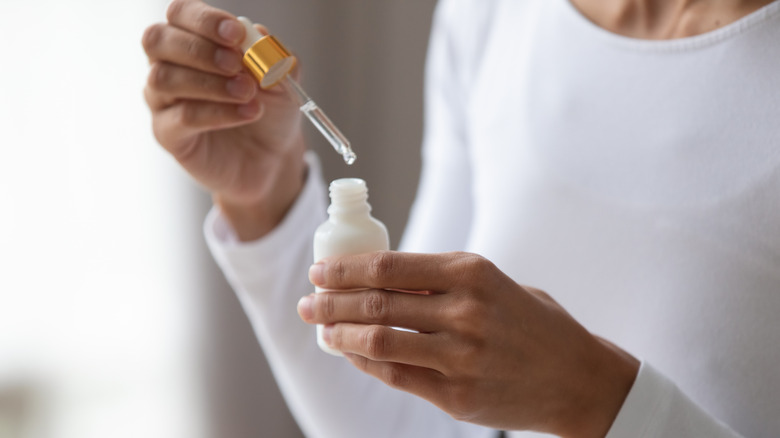Which Is The Best Chemical Exfoliant?
The term chemical exfoliant can be an overwhelming term. Without any context or prior knowledge, your first thought is that chemical exfoliants are harsh and extreme. However, a chemical exfoliant is another skincare product that promises clear and glowy skin. The Skin Institute defines a chemical exfoliant as an acid product you use to quicken the process of getting rid of dead skin cells. Although plenty of chemical exfoliants will also affect your skin in other ways, their main job is to rid your skin of those pesky dead skin cells. These accumulated skin cells can clog your pores and create blackheads, whiteheads, and other types of acne. Getting rid of these dead skin cells can help make your skin seem refreshed and glowy.
Like other skincare products, chemical exfoliants come in various types. Since there are plenty of acids that can dissolve dead skin cells, it's vital to examine your acids and see which is the best type for your skincare goals. While these acids might be similar, one chemical exfoliant stands out from the rest. Not only will this chemical exfoliant dissolve those dead skin cells but it will also create a base for you to get clear skin.
What chemical exfoliant should you be using
Before choosing your next chemical exfoliant, you need to know which is considered to be the most well-rounded acid for your skin. Dermatologist Elyse Love tells Shape that AHAs, or alpha-hydroxy acids, are universal acids and can even help to reduce hyperpigmentation and discoloration. Unlike BHAs, beta-hydroxy acids, any skin type can use AHAs safely. AHAs are also naturally derived from fruits and sugarcane and can help with a quick turnover of cells. This fast-paced turnover is what helps users get rid of any discoloration that may have occurred from sun damage or previous acne scars. Glycolic, lactic, and mandelic acids are common examples of AHAs that you will find in skincare products.
Beauty Rewind adds that AHAs are water-soluble and can be great for dissolving clogged pores at the surface of the skin. They dissolve the items inside of pores by exfoliating the surface of the pores. Scientifically, this acid un-bonds the items inside of the pores, breaking them apart. This creates glowing, toned, and smooth skin you will love.
How to incorporate chemical exfoliants into your routine
Adding chemical exfoliants to your skincare routine is actually very simple. Paula's Choice recommends adding your AHA chemical exfoliant after your cleanser and toner steps. After putting on your chemical exfoliant, you may continue with the rest of your routine. When applying your chemical exfoliant, ensure you put them on with either your fingers or a cotton pad.
Furthermore, Get the Gloss recommends not exceeding your chemical exfoliant usage two to three times a week until you know how it affects you. Try to slowly add it to your routine until you have completely gotten used to the product. You also want to ensure that you use a good amount of SPF the next day as your skin will be vulnerable to UV rays. This is because the chemical exfoliants are ridding the dead skin cells and the new fresh skin cells are now exposed. No matter the type of AHAs you go for, use proper care on your skin before and after.


